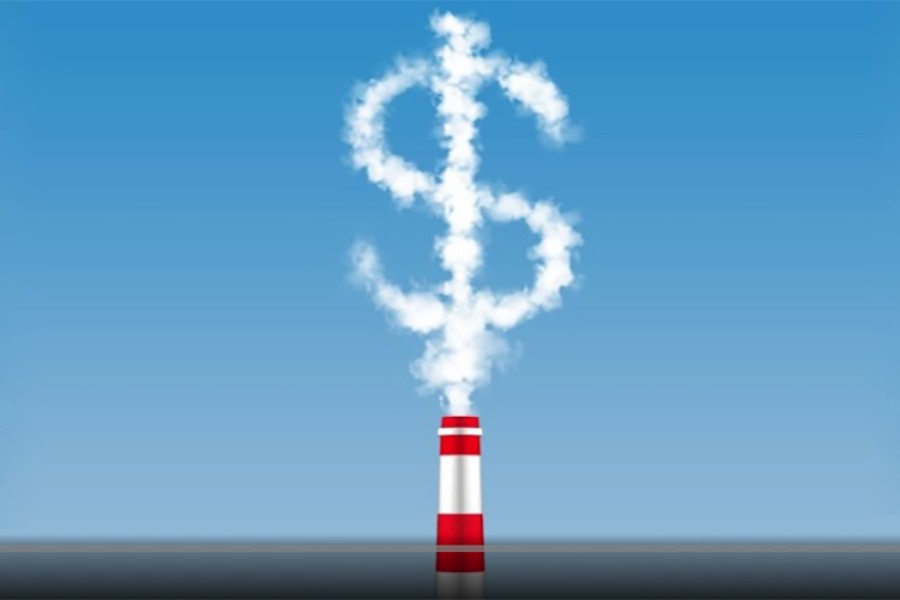One of the biggest challenges of the twenty first century is climate change. In order to successfully tackle this challenge, all nations need to take sustainable actions in an integrated manner. Governments from all over came together in COP 21 when they signed the Paris Agreement. It was a historic deal. The goal of the agreement was to mitigate the effects of climate change.
The Agreement had set up goals such as keeping global temperatures "well below" 2.0 degree celsius above pre-industrial times. With this goal in mind, the treaty aimed to reduce the amount of greenhouse gases emitted by human activities. But the transition to clean energy won't happen automatically. The governments of the world need to take progressive policies to ensure that clean energy can flourish while ensuring that demand for non-renewable energy declines.
In South Asia, the governments had taken some progressive policies from time to time. But later on, they have backtracked from it. There are discrepancies in the renewable energy policies of the three neighbouring South Asian countries-- Bangladesh, India, and Sri Lanka.
INDIA: In 2010, India introduced Clean Energy Cess which is a carbon tax on the production and importation of coal, lignite and peat to finance the National Clean Energy and Environment Fund. The goal of the fund was to provide funding for research and innovative projects in clean energy technologies. In the beginning, the cess was 50 rupees/ton for the production and import of coal. Currently, it stands at 400 rupees/ton.
But the Goods and Services Tax reform has disrupted this financing mechanism. Now, taxes from the states (provinces) where goods and services are produced are being allotted to the states where they are consumed. This meant that the industrially rich states were going to incur heavy loss in revenue collection. In order to alleviate the concerns of the developed states, the Indian government introduced the Goods and Services Tax (GST) Compensation Cess.
The GST Compensation Cess absorbed 13 different types of Cess including the Clean Energy Cess. The proceeds from the Compensation Cess will compensate the loss of revenue of the industrially rich states for the next five years. Since the inception of the cess, Rs 566.40 billion were accrued. But the GST Compensation Cess makes the future of the National Clean Energy and Environment Fund uncertain. The industrially rich states relying heavily on coal are among those who will get the GST Compensation Cess. In a way, this means that the Coal Cess/Clean Energy Cess is now going back to the coal producers.
Backtracking from the fund before maximising its utility is a complete letdown, especially when only 37 per cent of the Cess collection was transferred to the National Clean Energy and Environment Fund. Moreover, the mechanism of the Coal Cess was not effective. The government charged 400 rupees/ton of coal consumed. That has resulted in a price hike of coal-based power generation. Thus the consumers are bearing the burden of this taxation which is not the goal of the Coal Cess. The Coal Cess was supposed to penalise the coal industry for carbon emissions.
If the Coal Cess was based on the income of the producers, that goal would have been achieved. Taxing the producers based on their emission would have served the purpose as well. So, the funding mechanism itself wasn't completely functional. The government needed to ensure the mechanism was functioning properly rather than diverting it to the GST Compensation Cess.
BANGLADESH: Bangladesh has no provision for carbon tax. But in the current year's budget, there was a plan to impose carbon tax. In the end, the plan got cancelled due to concerns of the energy and transport lobbies over increased living costs. Bangladesh is not a huge emitter with emissions at only 0.44 tons of carbon dioxide per person, according to the World Bank.
But imposing carbon tax would have sent a message to the international community about Bangladesh's commitment to fight climate change. World Bank projections show, if Bangladesh imposed a tax of 5 USDs on each ton of carbon dioxide, it could generate $2.4 billion annually. So, Bangladesh could've opted to lead the clean energy revolution, but instead it chose to go backwards by taxing solar, not carbon.
SRI LANKA: Sri Lanka has taken a narrow approach towards carbon tax policy. They've chosen to impose tax only on vehicles with carbon footprint. The main goal of the tax is to curtail air pollution. All of the motor cars will be taxed Rs. 2000/year. Previously, the vehicle owners had to pay Rs. 1,100 for emission tests which is now free of cost. The vehicles get a green test certificate after the test. This certificate is compulsory for vehicle licence. The carbon tax covers the cost of the test.
This provision of carbon tax is a good move by the Sri Lankan government, but air pollution won't decrease just by taxing vehicles. Motor vehicles are only a part of carbon emission. There are large industries and power plants which are emitting carbon on a daily basis.
The carbon tax policies of the South Asian governments haven't been effective, so far. It is high time they reviewed their respective policies to come up with carbon tax mechanisms that curtail emissions effectively.


